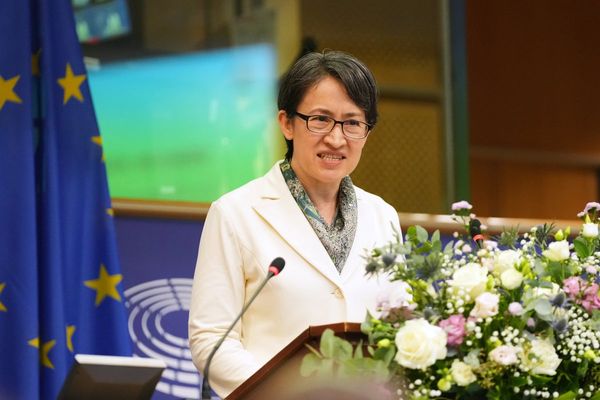
Singapore is a very wealthy country. It has the seventh highest GDP per capita in the world. But the country’s affluence does not mean working-class Singaporeans are doing well — a belief many in the elite in Singapore seem to hold, including government ministers.
Last week, a government minister, Tharman Shanmugaratnam said at a conference that the wages of lower-income and median-income Singaporeans have increased in the last 10 years.
He added that, “unlike other advanced countries where median wages have stagnated, middle-income Singaporeans have continued to pull ahead.”
However, when we compare Singapore with the other wealthiest advanced countries, the situation does not look so rosy.
I looked at the wage distribution in the 15 wealthiest advanced economies where data is available, and found that among them, wages for low- and middle-income Singaporeans are in fact the lowest.
The chart below compares the wages at the various percentiles, based on available data in each country.
At the 20th percentile, Singapore’s wage of S$2,167 (US$1,633) in 2019 is only about half that of Australia S$4,629 (US$3,489), Norway S$4,897 (US$3,691 and Iceland S$3,985 (US$3,004), and only a third that of Denmark and Switzerland.
Comparing wages at the 50th percentile (median wages), Singapore’s wage of S$4,000 (US$3,015) is also only about half that of countries with a similar GDP per capita. Even compared to Sweden and Finland, where the GDP per capita in 2020 is about US$10,000 lower, Singapore’s median wage is still only at 80% to 90% of their levels.
In the chart below, I compare the minimum wages of these eight countries. Australia is the only country with a national minimum wage. In the other countries, collective bargaining between labor unions and businesses is used to determine the minimum wage in the different industrial sectors. For this comparison, I use the wages in hospitality, which are among the lowest wages of industrial sectors.
Accordingly, the minimum wage that outsourced resident cleaners in Singapore earn is only half to a quarter that of the minimum wages in the other high GDP per capita countries.
While Singapore’s workers earn the lowest wages, Singapore’s GDP per capita is third highest among this group of countries, on par with Denmark. Factoring in the cost of living, Singapore’s costs are about as high as the other countries.

When charting the countries according to their minimum wages and cost of living, Singapore is an outlier — its wages are far below the trendline of the other countries.

In this comparison, Denmark has the highest wages relative to cost of living. If we were to take Denmark as a benchmark, Singapore’s minimum wage should be at S$3,961 (US$2,986), or more than three times what Singapore’s outsourced resident cleaners are currently being paid.
As it is, half of Singapore’s full-time workers currently earn less than S$4,000 (US$3,015).

While the minimum wages of most of the other countries are about 80% or close to the level of Denmark, Singapore’s minimum wage for outsourced resident cleaners is only about 30% that of what cleaners should be paid based on Denmark’s optimal minimum wage-cost of living ratio.

The comparison becomes clearer in the chart below — outsourced resident cleaners are being deprived of more than two-thirds of their wages by Denmark’s standard.

Even if Singapore’s minimum wage for outsourced resident cleaners were pegged to that of Australia, Iceland, Norway, or Switzerland, Singapore’s minimum wage would be at about S$3,000 (US$2,262) — or more than twice what these cleaners are currently earning.
However, there are currently close to 35% of full-time workers in Singapore who earn less than S$3,000 (US$2,262).
When comparing the median wages, a similar situation arises — Singapore has the third highest GDP per capita and a similar cost of living as these countries, but its median wage of S$4,000 (US$3,015) is the lowest among this group.
However, if Singapore’s median wage were commensurate to its cost of living, it would be between S$5,000 (US$3,769) and S$9,000 (US$6,785), when using these other countries as a gauge. This means that Singaporeans are losing out on 20% to 45% of the wages they could potentially earn if wages were pegged to the cost of living.

While middle-income Singaporeans might like to believe that they are pretty well-off, the truth is that they are also being deprived of their potential earnings.
The illusion comes from the fact that median income earners in Singapore earn three times more than workers at the minimum wage (of outsourced resident cleaners) — Singapore has the highest income inequality among these countries, and this disparity might lull them into the belief that they are better off.
But it does not mean middle-income Singaporeans are better off. As this comparison has shown, both low- and middle-income Singaporeans are not being compensated fairly for their work.

Singapore’s ruling People’s Action Party (PAP) likes to proclaim that wages cannot be spiked up because unemployment will drastically increase.
But the fact is, these other countries have unemployment levels similar to Singapore. Yet they have been able to pay wages higher than Singapore, while also paying their workers the highest salaries in the world.

Moreover, many studies have shown how minimum wage increases have “little or no employment” effect.
Even when comparing average personal income tax and social security contribution rates, the 23.3% that Singaporeans pay is comparable to that of other countries — this includes 20% in employee social security contribution into Singapore’s Central Provident Fund (CPF) and the personal income tax of 3.3% paid on the average wage of S$5,549 (US$4,183) in 2019 (calculated using the tax calculator).
It should be noted that the tax and social security payments deducted in other countries fund much more generous social welfare provisions than Singapore’s CPF.
After paying for a similar tax/CPF rates as these other countries, Singaporeans still pay one of the most expensive out-of-pocket healthcare and university fees in the world, and there are still no unemployment benefits while Singapore’s CPF payouts of S$355 (US$268) in 2018 are only 6.6% of the average wage of S$5,410 (US$4,078) in 2018.
In Norway and Denmark, citizens are guaranteed pension payouts of more than S$2,000 (US$1,507) and $3,000 (US$2,261), respectively.
Even after deducting the median wage using the average tax and social security contribution rates (average rates are already higher than median rates), Singapore’s median wage remains the lowest (the personal income tax rate of 1.9% is used for Singapore’s calculation, based on the median wage of S$4,000, or US$3,015).
The idea propagated by Singapore’s ruling class that high taxes erode the high wages in other countries is not true. Their wages start at a much higher base than Singapore’s, and their purchasing powers remain higher because their tax and social security contributions are actually put to good use and returned to the people.

The Organization for Economic Co-operation and Development (OECD) also provides data on the personal income tax and social security contribution of wages at 67% of average wage. For ease of comparison, if we were to use this rate for how much workers at the minimum wage would need to pay, the 20% CPF that Singapore’s outsourced resident cleaners have to pay is also similar to that of the other countries. (The actual rates for minimum wage workers in some of these other countries would be even lower.)

After deducting for tax and social security, Singapore’s outsourced resident cleaners earn less than S$1,000 (US$754), which is only half to a fifth of what minimum wage workers in the other countries earn.

Not only that, Denmark, Finland, and Norway have populations similar in size to Singapore, while Switzerland’s population is only 1.5 times that of Singapore’s, and Sweden, double. Denmark is also a country with few natural resources — a fact the PAP likes to rely on to defend why Singapore cannot pay higher wages to workers.
Denmark has not only been able to pay the highest wages in the world, but has also been able to do so while achieving a similar GDP per capita as Singapore.
The difference between Denmark and Singapore is that Denmark and the other Nordic countries truly believe in striving for income inequality and has become the country with one of the world’s lowest income inequality.
Meanwhile, Singapore’s Prime Minister Lee Hsien Loong said a few years ago, that, “If I can get another 10 billionaires to move to Singapore and set up their base here, my Gini coefficient will get worse but I think Singaporeans will be better off.”.
Evidently, Singaporeans would not be better off. But the PAP ministers are doing fine — their million-dollar salaries are the highest in the world.
In comparison, while Danish members of parliaments (MPs) earn only 25% more than the median income earner, Singapore’s MPs earn four times more, or 400% as much.
Clearly, the reason why the Singapore PAP government does not pay higher wages is because the PAP government does not want it, while reaping the rewards for themselves; and the lack of resources or fear of increasing unemployment has little to do with it.
There is simply no political will to uplift the wages of Singapore’s workers to a level comparable to the cost of living. But the PAP brooks no sign of ending the false impression that Singaporeans have high wages.
READ NEXT: Singaporeans Are Paid Much Lower Than You Think
TNL Editor: Nicholas Haggerty, Bryan Chou (@thenewslensintl)
If you enjoyed this article and want to receive more story updates in your news feed, please be sure to follow our Facebook.










